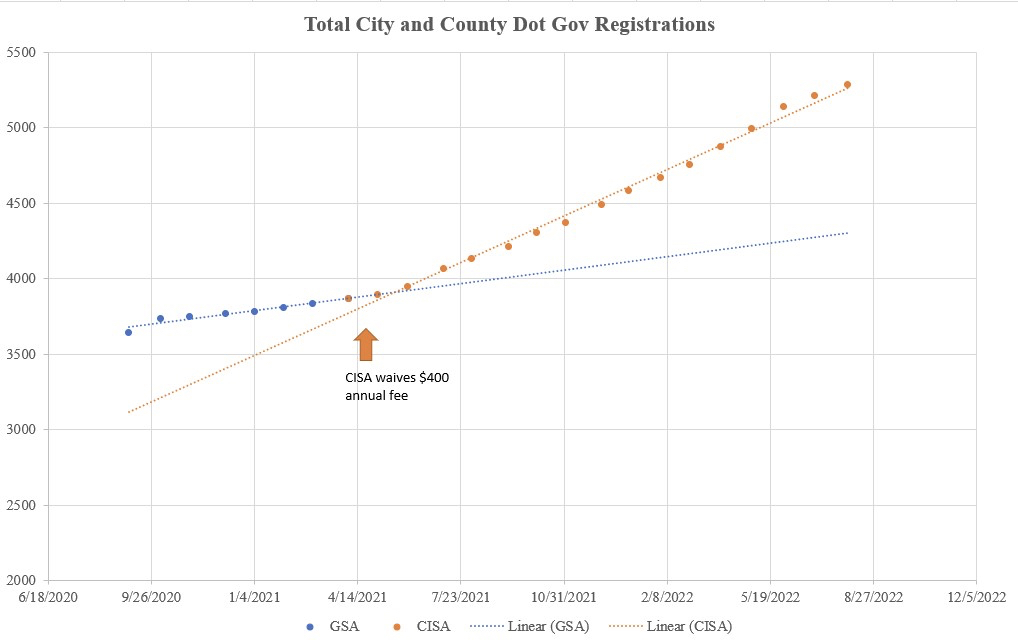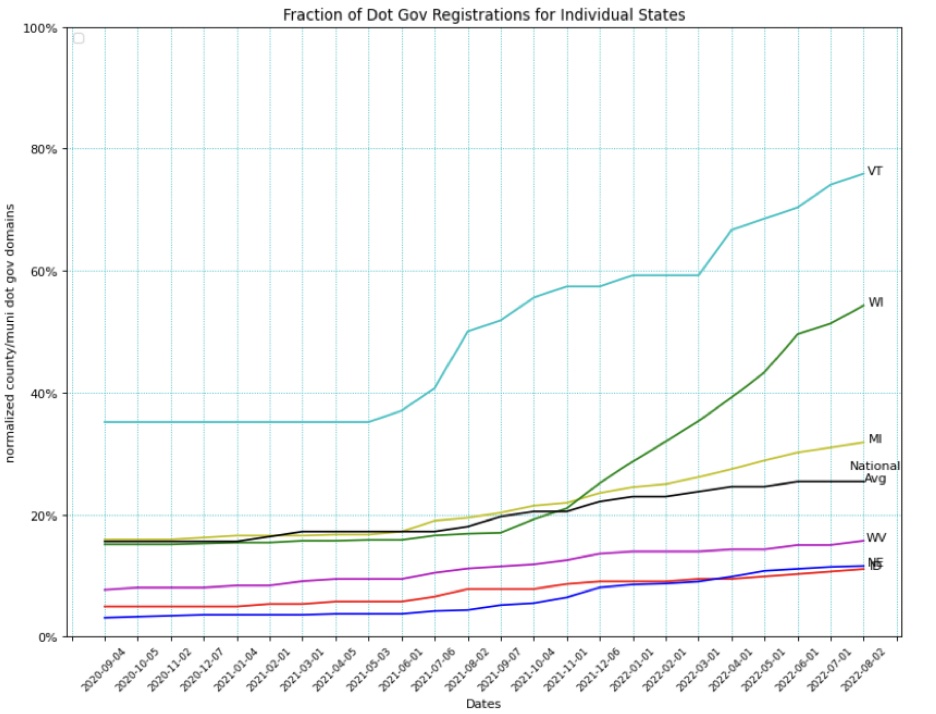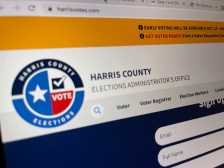Locals’ .gov adoption is getting better, but still slow

Dot-gov domains got a significant boost last year when responsibility for administering them shifted from the General Services Administration to the Department of Homeland Security’s Cybersecurity and Infrastructure Security Agency.
Why the move? Security. The .gov “brand” has come to be an important strategy in securing government systems.
In taking over .gov, CISA was given a mandate to increase adoption among local governments, many of which still use domains ending in .com or .org. One of the first things CISA did was waive the $400 annual fee that GSA previously charged .gov registrants.
Since then, I’ve been curious about whether more cities and counties are making the switch.
Measuring .gov adoption
Registration of a .gov domain is initiated by the jurisdiction — state, county or city — directly with CISA. For a long time, GSA did not publish any details about who was registering, though it eventually started publishing lists of all of the registered .gov domain names on GitHub, a practice that CISA has continued.
By stepping through historical versions of these lists, it is possible to build a record of new registrations over time to determine the rate of adoption. CISA’s master list of .gov registrations lets us know how many local domains exist in each state. To figure out how close we are to 100% adoption, we need a denominator, like the number of cities and counties in each state.
As a starting point, we will use 3,143 counties in the U.S., and 19,494 incorporated cities, for a total of 22,637 local governments that might register a domain. A few notes: Alaska, Connecticut and Louisiana don’t have counties, but do have county equivalents used for Census purposes. Some of the northeastern states have a large number of townships and using incorporated cities will undercount the number of potential registered domains.
Graphs tell the story
Armed with CISA’s .gov lists as our numerator, and the Census Bureau’s tally of counties and incorporated cities as our denominator, we can make some inferences about how adoption is going.
Waiving the $400 annual fee made a difference. The chart below uses a linear growth model to show the raw total number of city and county registrations over time. Registrations during GSA’s management of the .gov program are indicated in blue, while the CISA era appears in orange. I found that there was a significant uptake when CISA waived the fee.

Dot-gov adoption remains slow
Under GSA, the growth rate averaged 32 domains a month during the last year it managed the program. Since CISA took over, the growth rate has nearly tripled, adding 88 new domains per month, or almost 1,100 in the past year. But there’s both is good news and bad news.
The good news is that we’ve tripled the monthly rate of registrations. Using our denominator of 22,637 cities and counties, we are at 23% adoption. The bad news is that we’ve tripled a small growth rate — it will still take a long time to come close to 100% adoption.
Using the linear growth model, it will take more than 15 years to get to full adoption. If we make more aggressive assumptions and use an exponential model, it could take as little as six years to get there.
Neither the straight line nor the exponential growth curve is the right model. Often, new product adoption is modeled as a sigmoid, or S-shaped curve. That seems like a reasonable possibility with .gov: Adoption starts by growing slowly, then begins to climb very rapidly, then flattens out as we get close to 100%. Playing around with the assumptions in the models doesn’t change the overall slow adoption rate; we are still bracketed somewhere between six and sixteen years.
If we look at the growth rate for individual states, most of them are on the same slow annual increase that we see for all states combined. But there are a few states that have an abrupt bend where the adoption rate accelerated. I’ve labeled and color-coded the six states that had the largest percentage increase in registrations since September 2020: Nebraska (+279%), Wisconsin (+260%), Idaho (+125%), Vermont (116%), West Virginia (105%), and Michigan (+100%). By comparison, the average increase across all cities and counties in that time period was 45% (from 3,642 to 5,287). Each of the featured states’ adoption rates are scaled so that 100% means each city and county in the state has registered one domain.

Conclusions about dot-gov adoption
Waiving the annual fee has helped adoption. When GSA managed .gov and charged a $400 annual fee, local-government adoption was modest and linear. When CISA waived the fee, there was an immediate uptick in adoption.
Still, adoption is slow. When we look at the gap between the current number of 5,287 registered domains and a target of 22,637, adding 1,100 new domains is still quite slow. But there’s been significant progress in some states, including the six states that had increases of more than 100%.
I’ve made some backward-looking observations here but have not made any recommendations for how to accelerate the adoption. If I were going to take this research farther, I would reach out to those top six states to understand what happened to accelerate the adoption and if it could be replicated.
Steve Nichols is a subject-matter expert on state and local IT at the consulting firm Gartner. He served as chief technology officer for the State of Georgia for 20 years.






